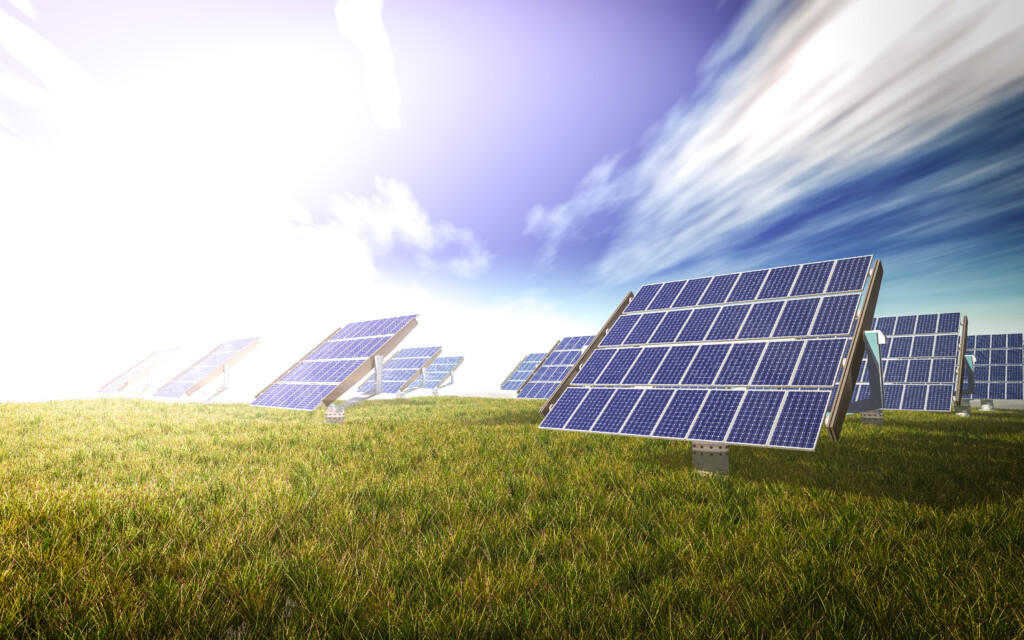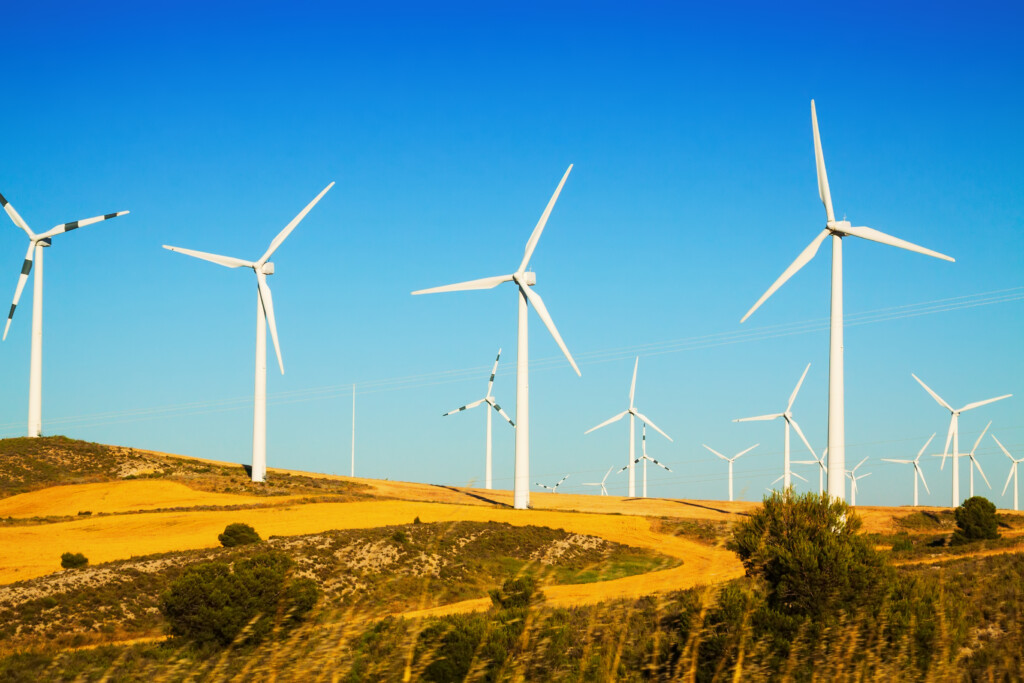As more than 70 countries have pledged to reach a net-zero target, including the world’s biggest polluters – China, the United States, and the European Union – renewable energy methods are becoming more important than ever. Renewable energy sources supplied 28.7% of global electricity generation in 2021 – the majority being supplied by hydropower and traditional biomass. Replacing the coal, gas, and oil-fired power industries with renewable energy sources can dramatically reduce carbon emissions. From wind energy and hydropower to artificial intelligence and blockchain technology, 2023’s renewable energy types will lead the world toward net zero. Renewable energy, or “clean” energy, is a plentiful, natural, unlimited resource that is self-replenished at a higher rate than it is consumed. It is also flow-limited: the resources are virtually inexhaustible in duration but limited in availability per unit of time. Non-renewable, or “dirty” energy, includes oil, gas, and coal. Non-renewable energy is available in limited amounts and is a finite resource. Global warming does not have an immediate effect. As David Wallace-Wells says in his book The Uninhabitable Earth, “It is a function that gets worse over time as long as we continue to produce greenhouse gas.” Emissions need to be reduced by 45% by 2030 to keep global warming below 1.5 Celsius. The world’s energy sector is a prime opportunity to avert the worst effects of climate change. Three-fourths of global greenhouse gas emissions come from the energy sector: the only sustainable way for future growth in the sector is predominantly in the new dominion of renewable energy. Market opportunity exists to both innovate and to take advantage of emerging markets to promote various technologies with the support from government and popular sentiment.
One of the world’s most accessible and readily available resources is sunlight. The sun’s abundant and replenishing nature makes it the number one resource for renewable energy. If one thinks of solar energy, the initial source is automatically solar photovoltaic panels. However, we can turn this raw power into useful energy in three varied ways.

The first is via the aforementioned solar photovoltaic panels. Solar panels generate electricity by consuming the sun’s rays onto their photovoltaic panels. These panels then convert this energy through a joint chemical and physical reaction into usable power. The first silicon solar cell was invented in 1954, and its application began in the late 1950s. At that time, simplicity and reliability were paramount, while cost was an afterthought. Since that time, enormous progress has been made in the sector in both performance and cost reduction. The “solar PVs’’” total solar electricity generation grew from 0.4 billion kilowatts in 1990 to over 842 billion kilowatts in 2020. The top five solar energy producers are China, the United States, Japan, India, and Germany. China’s total percentage share of the world’s total solar electricity generation – the highest of the five countries – is 32%. Germany’s percentage of 6% is the lowest. Solar power is set to account for more than half of the US’ new electricity-generating capacity by the end of 2023.Experts postulate that if PV technologies’ high initial cost is decreased by another magnitude, solar panels will become nearly ubiquitous by the end of the century. Solar panels will also assist in the expansion of grid-isolated and grid-connected applications in both the developed and developing parts of the world. The planet’s total energy requirements for a whole year can be reached in just one hour of solar energy that reaches the globe’s full surface. However, solar energy, like other renewable energy sources, has a problem with storage and dissemination. Therefore, the directly available solar energy for human consumption varies widely according to the time of day, the season of the year, and the geographical location of the solar panels. Photovoltaic panels also have an energy yield ceiling. Panels with a 20% efficiency of energy yield are already close to the scientific theoretical limit.
The second way to utilise sunshine is through the direct heating of buildings or water. Solar thermal panels are most effectively used within residential areas to instantaneously make hot water. The problem with these thermal panels is that they cannot be exported to the electricity grid, stored anywhere, or delivered uniformly throughout the year. For example, a UK citizen can use a solar thermal system to reduce their fossil fuel usage and save money on a new gas boiler, but they will not break even financially. Despite being able to utilise just bright light and not just direct sunshine, the thermal system can only meet up to 50-60% of their yearly hot water and space heating needs.
An important renewable energy resource is garnering energy from solar-powered biological systems. The last way to utilise the sun’s endless resources is with solar biomass. Solar biomass encompasses using trees, bacteria, algae, corn, soybeans, and other natural products to make energy fuels, chemicals, and building materials. Biomass is the European Union’s main source of renewable energy, with a share of almost 60%, primarily used for the heating and cooling sector. Specific plants can be burned in a power station to produce electricity or heat and grown primarily to be transformed into ethanol or biodiesel. Biomass is already used to fuel electric generators and other machinery. Scientists can cultivate genetically-engineered bacteria to produce hydrogen, ethanol, or electricity. The byproducts of other agricultural activities can be burned at a power station and turned into energy. Recent research from the University of California, Berkeley has proposed growing biomass crops to capture carbon from the air, then burying the harvested vegetation in engineered dry biolandfills. The process, called agro-sequestration, is carbon negative and enables stable sequestration of all biomass carbon. Another increasingly important and popular form of biomass is biochar, which is a type of charcoal. Biochar is a carbon-rich solid that is particularly useful in agriculture and works as an exceptional carbon sink. This carbon sink is where greenhouse gases are captured and packed away in a similar fashion to the agro-sequestration.

The world’s next leading self-replenishing resource is wind. We can harness the wind’s power by using turbines to convert the kinetic energy of the spinning blades into electric energy. The wind power plants transfer this energy into electricity and feed it into the national grid. In 2021, wind power was responsible for about half of the world’s increase in renewable energy generation, due to steady global growth and a tripling of wind capacity in China. Construction has recently begun on the UK’s largest wind turbine, which will reach a height of 150 meters and supply power to 3,000 homes. Wind turbines’ measure of success is their annual energy output, which is determined primarily by the speed of wind into their blades. Winds are generally stronger and steadier at sea than on land. This can predict that offshore wind turbines are most beneficial than onshore ones. Problematically, offshore wind sites tend to be technically, economically, and financially less lucrative than good land sites. 87% of European new wind installations in 2023 were onshore wind. Shallow offshore wind sites cost twice as much as the land-based wind but can be economically feasible with modest governmental subsidies. Deep offshore wind turbines are astronomically higher and not currently economically feasible.
The main problems with onshore wind turbines are their intrusion into densely populated residential areas. The best land sites for potential wind energy are often areas with high levels of public resistance, citing concerns over visual aesthetics, noise pollution, and harm to wildlife. This is one of the primary reasons why countries with large portions of wind turbine energy in their electricity grid, like Denmark and the Netherlands, are focusing on offshore projects. In other countries, like the United Kingdom and Sweden, wind turbines are being purposefully built offshore due to the countries’ high value for the preservation of nature and landscapes. Similarly to solar photovoltaic panels, wind turbine power plants have an issue with energy storage, efficiency, and output, due to both the energy source’s natural production methods and the earth’s volatile wind variability.

Geothermal energy is one of the lesser known naturally occurring earthly resources. However, it holds great promise for global efforts in combatting climate change. The energy source is defined as natural heat extracted from the earth’s crust using a vertical thermal gradient. This energy can be found most readily available where there is a discontinuity in the earth’s crust; for example on separation or erosion of tectonic plates. The heat can also be created by the decay of naturally occurring radioactive elements in rocks. Geothermal is an attractive resource due to its always being “on”, unlike the more volatile sun and wind power. Humans have been benefiting from geothermal energy via hot springs and steam vents. Technological advancements in the 20th century have now made it possible to locate and drill into hydrothermal reservoirs to pipe steam or water to the surface and convert it into energy.
The most active geothermal resources can be found along major tectonic plate boundaries. The strongest geothermal energy is usually where most volcanoes are located. The Pacific Ocean’s Ring of Fire is the most active geothermal area on the planet. There are concerns a geothermal energy plant will trigger an earthquake in areas with already volatile seismic activity. A 2017 South Korean earthquake was the largest ever to be linked directly to the development of an enhanced geothermal system. Indonesia is home to three of the 10 biggest geothermal power plant installations; closely followed by the United States and the Philippines with two each. A US’ California geothermal complex houses 15 power plants making it the biggest geothermal installation in the world.
Geothermal energy is cost competitive with conventional energy sources and produced by well-proven and reliable technology. The source has been used for more than half of the 20th century to heat large municipal districts and to feed power plants generating electricity. It has strong potential to be scaled up to reach the levels of energy necessary to power large areas of land. However, the difficulty with making geothermal power consistently sustainable is the speed at which heat travels through solid rock. This limits the rate at which the heat can be ejected from the core of the earth. Generation growth in this power sector has stalled in the last few years due to limited capacity additions. Geothermal energy is still well below the growth rates needed to be in line with the Paris Agreement’s long-term levels.

Hydropower is the world’s largest renewable energy resource for electricity: but wind energy is soon set to take over the lead. It is also the most commercially developed renewable resource. Water-based energy plays an essential role for the more than 150 countries generating hydroelectric power. Hydropower relies on fast-moving water and converts the force of that water into electricity. The successful erection of a dam or a barrier can create a reservoir to control the flow of water to drive a generator’s turbine blames, generating electricity. Hydropower harnesses the energy of water from reservoirs and rivers flowing from higher to lower elevations. To create hydroelectricity, the power resource needs altitude and rainfall. Unstable rainfall patterns, climate-induced droughts, or changes to ecosystems all impact the levels of energy generated from a hydroelectricity resource. Sometimes consider to be nonrenewable energy, mega-dams divert and reduce natural water flow. Hydroelectricity has also been critised for not reducing overall greenhouse gas emissions in comparison to fossil fuel power plants. Additionally, building a dam requires large swaths of land to be flooded in densely inhabited rural areas, usually displacing large numbers of poor, indigenous peoples. Mitigating these social impacts often represents a significant portion of the project’s cost, which can make the project socially and economically unviable.
Ocean energy, also specified as wave energy and tidal energy, harnesses the power of the ocean’s waves by using twice-daily tidal currents to drive turbine generators. Ocean wave energy is energy that has been transferred from the sun to the wind and consequently to the ocean. Sometimes called third-hand solar energy, ocean energy uses the kinetic and thermal energy of seawater’s waves and currents to produce electricity or heat. The renewable energy resource of the ocean can come from the waves, tidal range, tidal currents, ocean currents, ocean thermal energy conversion, and salinity gradients. Tidal range energy has already been harnessed by the adaptation of river-based hydroelectric dams to estuarine situations. Other ocean energy technologies have unfortunately not yet been developed beyond the prototype stage. Due to its nascent stage of development, ocean energy is unlikely to make a significant contribution to the Paris Agreement’s goals in 2023 but offers the potential for long-term carbon emissions reduction. Albeit at an early stage of development, ocean energy systems have various prototype wave and tidal devices being explored and tested. Scientists believe the theoretical potential of ocean energy can exceed present human energy requirements. Ocean energy can be used to both supply electricity, but also to create direct potable water production and to meet thermal energy service needs.
As climate change keeps putting pressure on our global systems and technology keeps advancing, scientists and companies alike have been fabricating creative solutions to reduce greenhouse gas emissions. While not a renewable energy source per se, the following innovations will assist the renewable energy industry in 2023.
The world’s energy grid is one of the most complex infrastructures, while also being one of the most crucial in harnessing the powers of renewable energy. AI can be instrumental in creating effective power consumption forecasting and predictive maintenance of renewable energy sources. Ernest & Young’s research has found that the world’s low-carbon transition will need AI to integrate an increase in renewable energy systems while also ensuring a stable and efficient grid. Beyond already providing grid analytics and management, AI can assist the grid in predicting capacity levels and consequent time-based autonomous trading and pricing. Improved demand forecasting and asset management can be created by AI’s powerful predictive capabilities. Renewable energy startups can also utilise data analytics and machine learning for their own renewable energy model designing and performance analysis. Additionally, AI can be used to optimise the recycling of materials used in renewable energy systems, such as broken or retired solar panels, wind turbines, and hydroelectric dams. The AI systems can identify the most valuable materials and chart the most efficient recycling process.
DESS can overcome irregularity in production – one of the main issues of solar and wind energy – by localising renewable energy generation and storage. Startups can offer a range of battery and batteryless solutions. By using lithium-ion batteries and sophisticated technology, excess power can be absorbed or released quickly. Surplus energy can sometimes also be converted to other forms of energy, such as heat or methane for storage. DESS provides alternative energy and improves energy resiliency when the world’s natural resources are especially volatile.
Stay a while and read more posts like this
Imagine a source of energy that’s efficient, renewable, and capable of reducing our reliance on fossil fuels. Picture a world where the heat residing beneath...
Renewable energy, often referred to as alternative energy, is derived from natural resources or processes that continuously renew themselves. This includes naturally...
Green Energy, Green Living, Renewable Energy
Ever pondered the impressive perks of using green energy? Given the burgeoning cognizance about how traditional energy sources are affecting our environment, the...